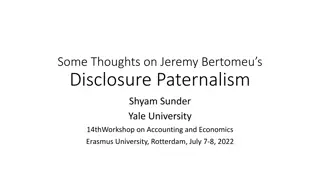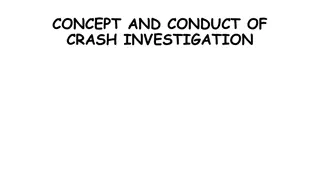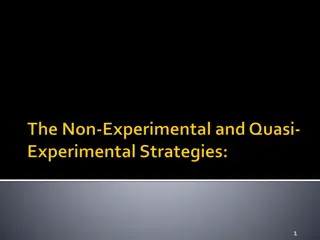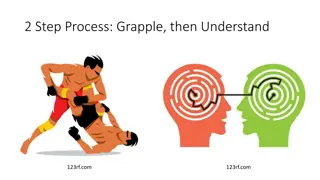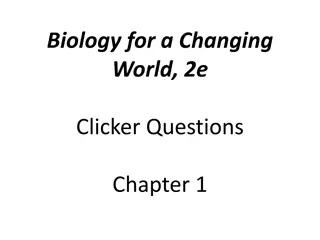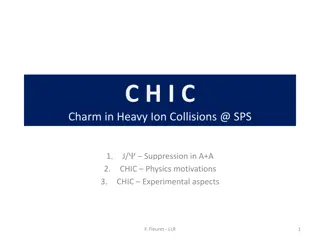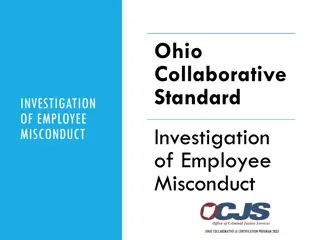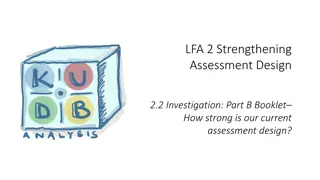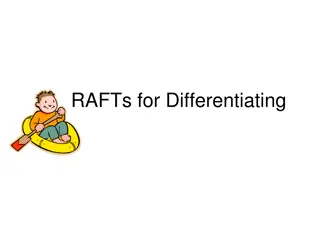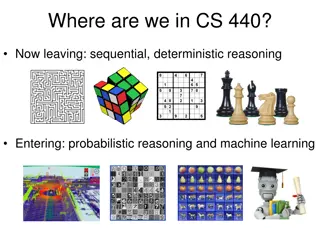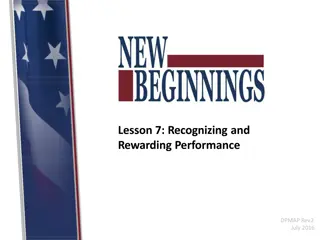What Motivates Paternalism? An Experimental Investigation
Centuries of normative debate on paternalism have resulted in its ubiquity in various aspects of society, from consumer protection to safety regulations. However, there is a scarcity of empirical studies on the motivations behind paternalistic interventions. This experimental investigation delves into the fundamental questions of how people decide what's good or bad for others and explores the support for paternalistic policies. Through structured experimental analysis, the study aims to shed light on the motivations driving paternalism.
Download Presentation

Please find below an Image/Link to download the presentation.
The content on the website is provided AS IS for your information and personal use only. It may not be sold, licensed, or shared on other websites without obtaining consent from the author. Download presentation by click this link. If you encounter any issues during the download, it is possible that the publisher has removed the file from their server.
E N D
Presentation Transcript
_____________________________________ What Motivates Paternalism? An Experimental Investigation _____________________________________ Sandro Ambuehl, B. Douglas Bernheim, and Axel Ockenfels AER, March 2021
I. _____________________________________________ Motivation Centuries of normative debate about paternalism (e.g., Locke, Mill) Paternalism is ubiquitous Consumer protection, regulation of payday lending and other financial transactions, Undue Influence Doctrine, suicide laws, safety regulations, controlled substances Paternalistic policies comprise a substantial fraction of the US economy (Currie and Gahvari, 2008) Scarcity of empirical studies, limited positive understanding of paternalism Structure of experimental analysis: Part 1: Basic facts about paternalistic interventions Part 2: How do people decide what s good/bad for others? Part 3: External validity (support for paternalistic policies)
II. _____________________________________________ Experimental design Main design features Roles for subjects Chooser: Selects an action from a choice set (money now vs. money later) Choice Architect (CA): Decides which options are available to the Chooser Each Choice Architect is paired with one anonymous Chooser The typical task: Some key design features: No advice motive for intervention: Allows for structured and unstructured advice and recommendations No convenience motive for intervention: Chooser rank-orders all options No selfish motive for intervention: CAs are unaffected by the choice
II. _____________________________________________ Experimental design Summary of additional design elements 14 rounds of paternalistic decisions will describe variants as they come up Other elicitations will describe as they come up One randomly selected choice is implemented (strategy method) Implementation: 303 subjects in the role of Choice Architect recruited at the Cologne Laboratory for Economic Research, Germany
III. _____________________________________________ Basic facts about interventions Question 1: Do people intervene, and if so, in what way? YES by restricting impatient choices
III. _____________________________________________ Basic facts about interventions Question 2: Are the interventions paternalistic? That is, do people believe they are beneficial Design feature: we ask Choice Architects whether chosen and exogenous restrictions make Choosers better off. Both incentivized and unincentivized versions. Overall, around 65% of those imposing restrictions said they made the Chooser better off (around 26% said worse off) Subjects who imposed restrictions were significantly less likely to say exogenous restrictions were harmful, and significantly more likely to say they were helpful Generally corroborated by incentivized versions So generally YES, they do
III. _____________________________________________ Basic facts about interventions Question 3: Do people intervene to correct perceived present bias (the reason commonly envisioned by behavioral economists)? Design feature: For one of the paternalistic decisions, we add front end delay, which should neutralize present bias, and remove this motive for intervention. NO with front-end delay, there is slightly more intervention, not less
III. _____________________________________________ Basic facts about interventions Question 4: Do interventions depend on knowledge about the Chooser s inclinations and evaluations? Alternative: CAs simply impose their own inflexible judgments. Design feature: For some paternalistic decisions, we provide information about the Chooser s patience (high low), as well as happiness with their patience YES they respond to the Chooser s degree of patience, and to the Chooser s happiness with their degree of patience
IV. _____________________________________________ How do people decide what is good or bad for others? Remember that CAs do think Chooser s inclinations and subjective experiences are relevant. But where does this information normally come from? A natural possibility: people project the inclinations and subjective experiences of others based on themselves. As we have no immediate experience of what other men feel, we can form no idea of the manner in which they are affected, but by conceiving what we ourselves should feel in the like situation. Adam Smith, The Theory of Moral Sentiments But what do they project? Their values, susceptibility to mistakes, or both? A mistakes projective paternalist assumes others tend to share her susceptibility to error, and tries to help others avoid choices she herself would like to reject, but often doesn t An ideals-projective paternalist assumes her own preferences are relevant for others, either because she thinks they share her values or because hers are more valid A conventional behavioral welfarist has accurate beliefs about others, unrelated to her own preferences
IV. _____________________________________________ Question 5: Are people mistakes-projective, ideals-projective, or neither? Proposition: Through the mistakes-projective (ideals-projective) mechanism, the optimal mandate and optimal surrogate choice are decreasing (increasing) in the CA s own selection. (No relation for conventional behavioral welfarist.) Design elements: elicit CA s time preferences (avoiding cross-contamination), include surrogate choices How do people decide what is good or bad for others? Implies ideals-projection, not mistakes-projection Explains earlier finding on front-end delay Similar pattern for surrogate choices
IV. _____________________________________________ How do people decide what is good or bad for others? Question 6: Are interventions misguided? Answer doesn t follow from previous result, because an ideals-projective paternalist may have correct beliefs about others choices, but may decompose those choices into and ideal and mistaken component based on their own subjective values. Design element: elicit beliefs about what Choosers will select if unrestricted. Regressions show that: CAs who choose more patiently for themselves think Choosers will be more patient (False Consensus Effect) These beliefs matter: CAs who think Choosers are more patient impose more restrictive mandates Therefore, more patient CAs impose restrictions what bind for more Choosers However, patient and impatience CAs believe their chosen restrictions will affect the same fraction of Choosers
V. _____________________________________________ External validity Question 7: Are the results applicable to real-world policy preferences? Design elements: Subjects expressed support for or opposition to four real-world paternalistic policies for a neighboring country (Switzerland): taxes on sugary drinks, alcohol, and tobacco, and restrictions on short-term high-interest loans. Subjects indicated their consumption/use of these products Support for restrictions is in all cases correlated with more restrictive mandates in the experiment. Support for each policy exhibits the characteristic correlation of ideals-projective paternalism: greater use implies lower support for the restrictions (on others in a neighboring country).




